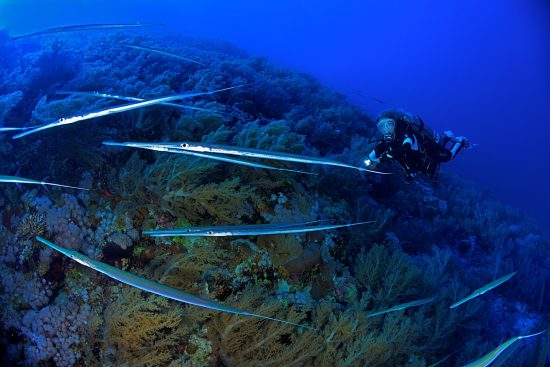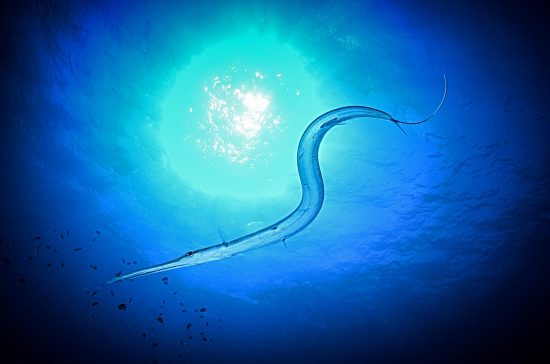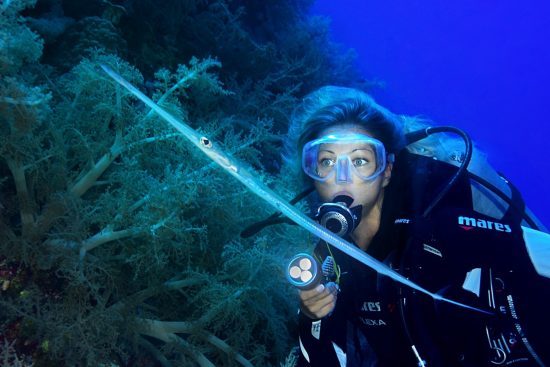




There are only three species of trumpetfish in the world (discovered so far anyway): the Chinese trumpetfish (Aulostomus chinensis), the Western Atlantic trumpetfish (Aulostomus maculatus) and the Atlantic trumpetfish (Aulostomus strigosus). Their name derives from two Greek words: aulos – flute, and stoma – mouth.
They share the order Syngnathiformes with seahorses and pipefish, and perform a similar, beautiful mating dance. After courtship, the female decides if the male is worthy of looking after the babies and transfers the eggs into his pouch where they safely grow until they are ready to hatch. They are widely spread worldwide in tropical waters, with one of the species living in the Indo-Pacific and two in the Atlantic.
They live among reefs, growing up to 1m in length. Swimming upside down, they look like they are standing on their heads, hiding in soft corals, waiting for food to come by. They can change colour and camouflage themselves, blending into the reef. Their bodies are stiff and not very flexible, with long, tube-like mouths and long bodies. Both their dorsal and anal fins are very close to their tail.
Their favourite food is small reef fish which they hover over, pretending to be a floating stick, and quickly suck in with their tubular mouth, swallowing the unsuspecting victim. They can expand their jaws into round holes almost as large as their bodies when eating. Sometimes they are lazy and follow other fish such as moray eels, waiting for small spooked fish to swim right into their mouths. They have also been known to hide behind other fish, using them to hide, pretending to be a branch.
So, the next time you see a floating stick within a coral reef, look again. It might just be a perfectly camouflaged trumpetfish, waiting for their next meal to come by!
Equipment used on dives: Flexa wetsuit, Juno mask, EOS 20RZ torch, Abyss 52X regulator, X-Stream fins
Text by Bogna Griffin BSc (Hons) Applied Freshwater and Marine Biology, GMIT, Ireland
Photos by Ivana O.K. & Janez Kranjc
 Ivana and Janez
Ivana and Janez 6th December 2018
6th December 2018
